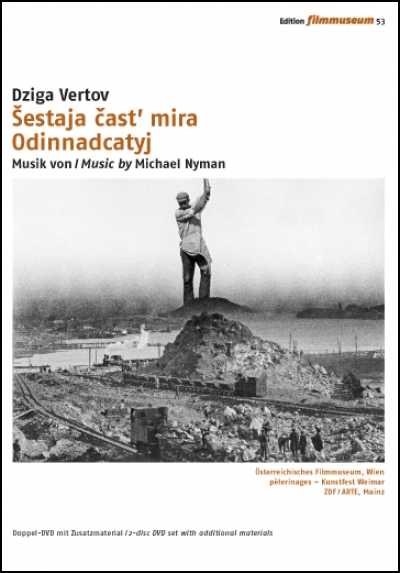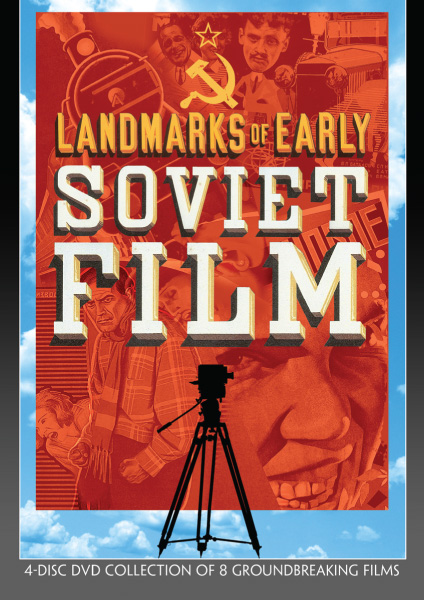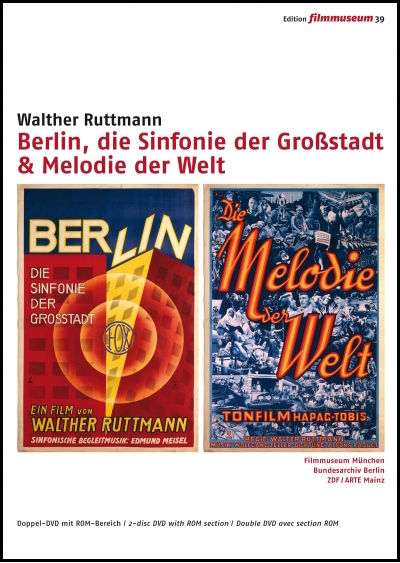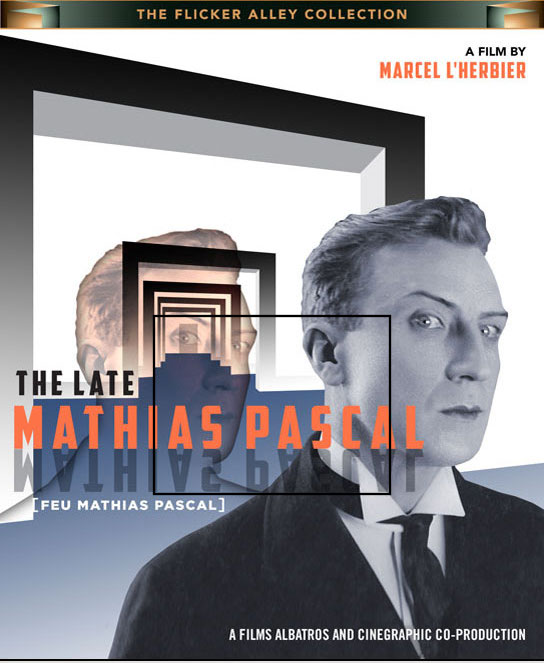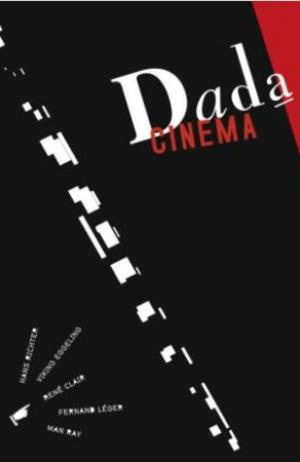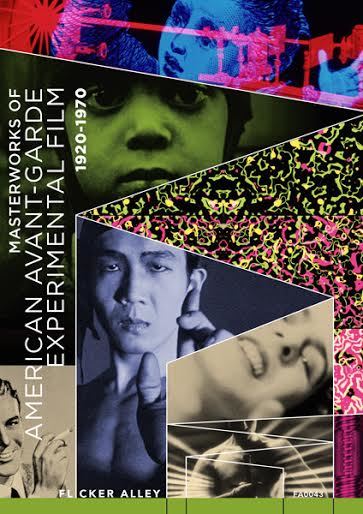GME DVD Distribution – The Man With The Movie Camera & L'Inhumaine, Now Available on Blu-ray for North American Institutional Sales
/Gartenberg Media Enterprises is pleased to present Blu-ray publications of Marcel L’Herbier’s L’INHUMAINE (1924), a film that showcased the most cutting-edge modern arts in France and Dziga Vertov’s THE MAN WITH THE MOVIE CAMERA (1929), Soviet cinema’s crowning achievement produced at the apotheosis of the silent film era.
◊
"I am an eye. A mechanical eye. I am the machine that reveals the world to you as only the machine can see it. I am now free of human immobility. I am in perpetual motion. I approach things, I move away from them. I slip under them, into them. I move toward the muzzle of a race horse. I move quickly through crowds, I advance ahead of the soldiers in an assault, I take off with airplanes, I fall on my back ad get up at the same time that the body falls and gets up. This is what I am, a machine that runs in chaotic maneuvers, recording movements one after the other, assembling them in a patchwork. Freed from the constraints of time and space, I organize each point of the universe as I wish. My route is that of a new conception of the world. I can make you discover the world you did not know existed.”
– Dziga Vertov, Kino-Eye Manifesto (1923)
These words, written in 1923 (only a year after Robert Flaherty’s NANOOK OF THE NORTH was released) reflect the Soviet pioneer’s developing approach to cinema as an art form that shuns traditional or Western narrative in favor of images from real life. They lay the foundation for what would become the crux of Vertov’s revolutionary, anti-bourgeois aesthetic wherein the camera is an extension of the human eye, capturing “the chaos of visual phenomena filling the universe.” Over the next decade-and-a-half, Vertov would devote his life to the construction and organization of these raw images, his apotheosis being the landmark 1929 film THE MAN WITH THE MOVIE CAMERA. In it, he comes closest to realizing his theory of ‘Kino-Eye,’ creating a new, more ambitious and more significant picture than what the eye initially perceives. This Blu-ray edition brings together four key films from the oeuvre of Dziga Vertov.
Dziga Vertov (née David Abelevich Kaufman) studied medicine before turning to the arts. He was inspired by the Futurist movement as well as the French avant-garde. Just after the Russian revolution, in 1918 he became editor-in-chief of the first regular newsreel, CINEMA WEEK. In 1922, he was put in charge of a new newsreel, KINO-PRAVDA; one issue of which, KINO-PRAVDA NEWSREEL 21: LENINIST FILM TRUTH, is included in this Blu-ray edition.
In 1923, Vertov wrote a manifesto on “Kino-Eye”, in which he laid out the foundation of a new, independent anti-bourgeois aesthetic movement. For Vertov, the camera lens was an extension of the human eye. The film KINO-EYE 1924) applies these principles through his cinematic practice. The film reveals the joie de vivre of Soviet youth in a small village taking hold of their destiny, and building the future of the Soviet revolution.
In 1926, Vertov made STRIDE, SOVIET! (SHAGAI, SOVET!) and ONE-SIXTH OF THE WORLD, and in 1928, THE ELEVENTH YEAR. Following this, Vertov created his most famous film, THE MAN WITH THE MOVIE CAMERA, one of the great city symphony films in the tradition of MANHATTA (1921) and BERLIN: SYMPHONY OF A GREAT CITY (Walter Ruttman, 1927), as well as one of the most important movies about the filmmaking process.
Vertov’s next film, ENTHUSIASM: SYMPHONY OF THE DONBASS (1930) was a radical experiment in early sound filmmaking. Accustomed to experimenting with aural material, Vertov composed a particularly sophisticated sound track for his first sound film – focusing on the success of miners in achieving targets set by the central authorities – using the noises of machines and factory atmosphere.
Following this, Vertov produced THREE SONGS OF LENIN (1934), an ode to the founder of the Soviet Union. This film was released in both silent and sound versions, so that it could be shown in the Soviet Union in theaters that were not yet equipped for sound. The film was made during the rise of Stalin, and thus, suffered re-edits in the cause of Soviet Realism.
◊
In 1922, after several years of directing successful films for the Gaumont studios, Marcel l'Herbier created his own production company, Cinégraphic. In addition to producing films by Claude Autant-Lara, Louis Delluc, Jean Dréville and others, L’Herbier put together an extremely ambitious project, L’INHUMAINE, a film intended to showcase the most cutting-edge modern arts in France (plastic arts, decorative arts, architecture, high fashion, music and cinema). The film stars the opera singer Georgette Leblanc; the melodramatic story concerns a femme fatale who is courted by a series of lovers, including a young engineer (played by Jaque Catelain), who symbolizes the future and the miracle of science.
The screenplay was written with an operatic structure. L’Herbier wrote that he “built chords, plastic harmonies; what is important is not the stream of events, it is what is vertical, it’s plastic harmony.” For the production of the film, L’Herbier brought together some of the greatest artists from the time period, including painter Fernand Léger, architect Robert Mallet-Stevens, glassmaker René Lalique, fashion designer Paul Poiret, sculptor Joseph Csaky, tapestry-maker Jean Lurçat, and directors Alberto Cavalcanti and Claude Autant-Lara, all of whom contributed to the striking visual design of this noteworthy film.
Following L’INHUMAINE, L’Herbier directed FEU MATHIAS PASCAL (1925), a dramatic film starring Ivan Mouzjoukine with stylized sets by Lazare Meerson and Alberto Cavalcanti. Over the course of his career, L’Herbier wrote several articles and pamphlets opining about the deep nature of the “Seventh Art.” From the beginning, L'Herbier fought for the recognition of the status of the filmmaker as artist, and of film craftsman as creative forces in the visual design of the motion picture.
◊
Additional Titles of Related Interest From GME:




